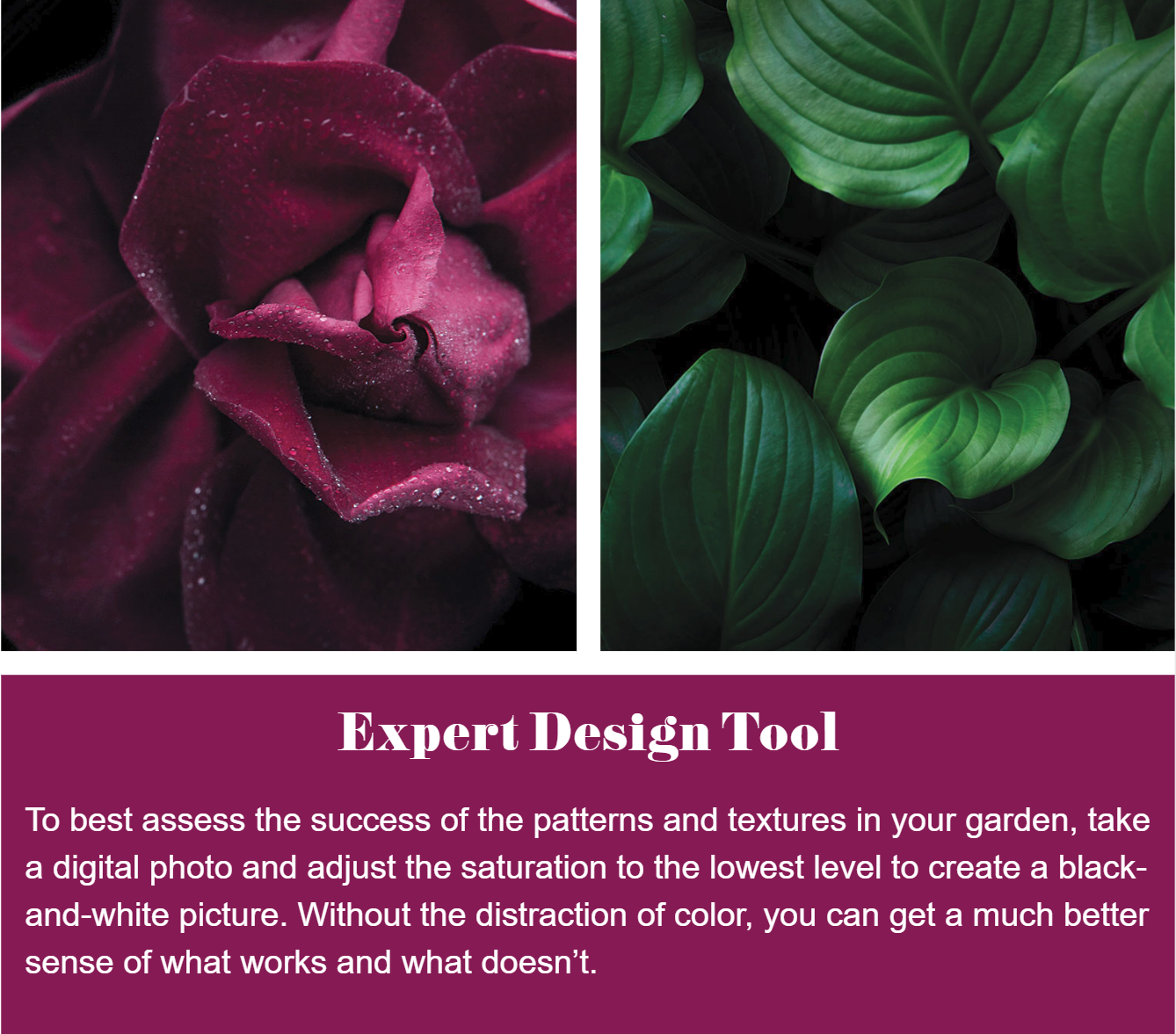structure and style
How to Use Texture and Pattern in the Garden
WRITTEN BY CATRIONA TUDOR ERLER
Creating a pleasing landscape or garden for your home is an opportunity to express yourself creatively. Two design elements that contribute enormously to the success of a garden composition are texture and pattern. The truly great gardens use these elements, along with unity and harmony, proportion and scale, light and shade, and mass and space to create a garden that has a delightful tension between restful and stimulating.
PATTERN
Patterns give coherence and definition to garden design. While the physical layout of paths and beds in the garden is the primary source of pattern, plants also play a role.
Use pattern to create emotional effects in your garden. For example, a static design that can be taken in at a glance is reassuring and restful. The eye focuses on the pattern itself, rather than being lured to move through the space. In these cases, the pattern should be interesting enough to capture and hold attention.
In contrast, a pattern with movement can generate excitement and curiosity. A diagonal line that stretches in either a straight or zigzagging direction across the property adds a sense of urgency and will draw the eye. Punctuate the design with a focal point such as a bench, statue, urn, or feature plant at the far end of the line to provide an eye-catching and satisfying conclusion to the visual journey.
Patterns that hide parts of the garden add the allure of mystery. Viewers don’t know what’s around the corner or beyond the large shrub for example, and that sense of the unknown is compelling. Adding mystery to a garden is particularly effective in a small space. A small garden will seem larger if you can’t see the entire area in a glance.
In addition to the physical aspects of pattern, think about light, shadow, and color as part of the palette, and be careful not to overdo bold patterns, which can overwhelm.
Whatever the pattern, whether symmetrical and ordered for a formal garden, or abstract and wild for an informal design, it will establish the essential character of your garden.
TEXTURE
Texture is defined as in the visual and tactile quality of a surface. In a work of art (or the garden) the effective combination of various textures contributes to the success of the overall composition, making an arresting, pleasing scene.
In the garden, texture is provided by hardscaping, foliage, and flowers. Hardscape includes features such as walls, paving, fences, and arbors. Whatever material you choose to use for garden structures, its tactile appearance, whether coarse or fine, will contribute to the textural effects in the garden.
Foliage is the second important source of textural effects. Large-leaf plants are bold in texture, creating a dramatic, assertive look; small-leaf plants appear more delicate. Too much of either will generally make a less successful design than a balanced blend. Is the garden too bold and hard looking? Add some fine textured foliage to soften it. Too boring because everything is lost in a fine blur? Contrast the fine texture with bolder plants.
Leaf color can influence the perception of bold, medium, or fine texture. Even a bold-leaf plant such as a hosta will look finer in texture if it has pale variegation or edges to the leaves. Golden and brightly colored foliage tends to look less bold than dark-green leaves.
Flower form also contributes to texture in the garden. If you study the famous English herbaceous and perennial borders, you will notice that they have a pleasing mixture of flowers with round heads; tall, pointed spires; airy sprays of small blossoms; umbrella-shaped blooms; and flowers with tiny petals. The variety of textures, blended into an attractive whole, is part of the visual appeal of these borders.
Experiment with creating different effects by combining contrasting textures, and don’t be afraid to make mistakes. As the great early twentieth-century English gardener author Vita Sackville-West wrote, “Gardening is largely a question of mixing one sort of plant with another sort of plant and seeing how they marry happily together; and if you see that they don’t marry happily, then you must hoick [pull] one of them.” With little trouble, you can create a garden that combines pattern and texture in a way that pleases your eye and satisfies your soul.






